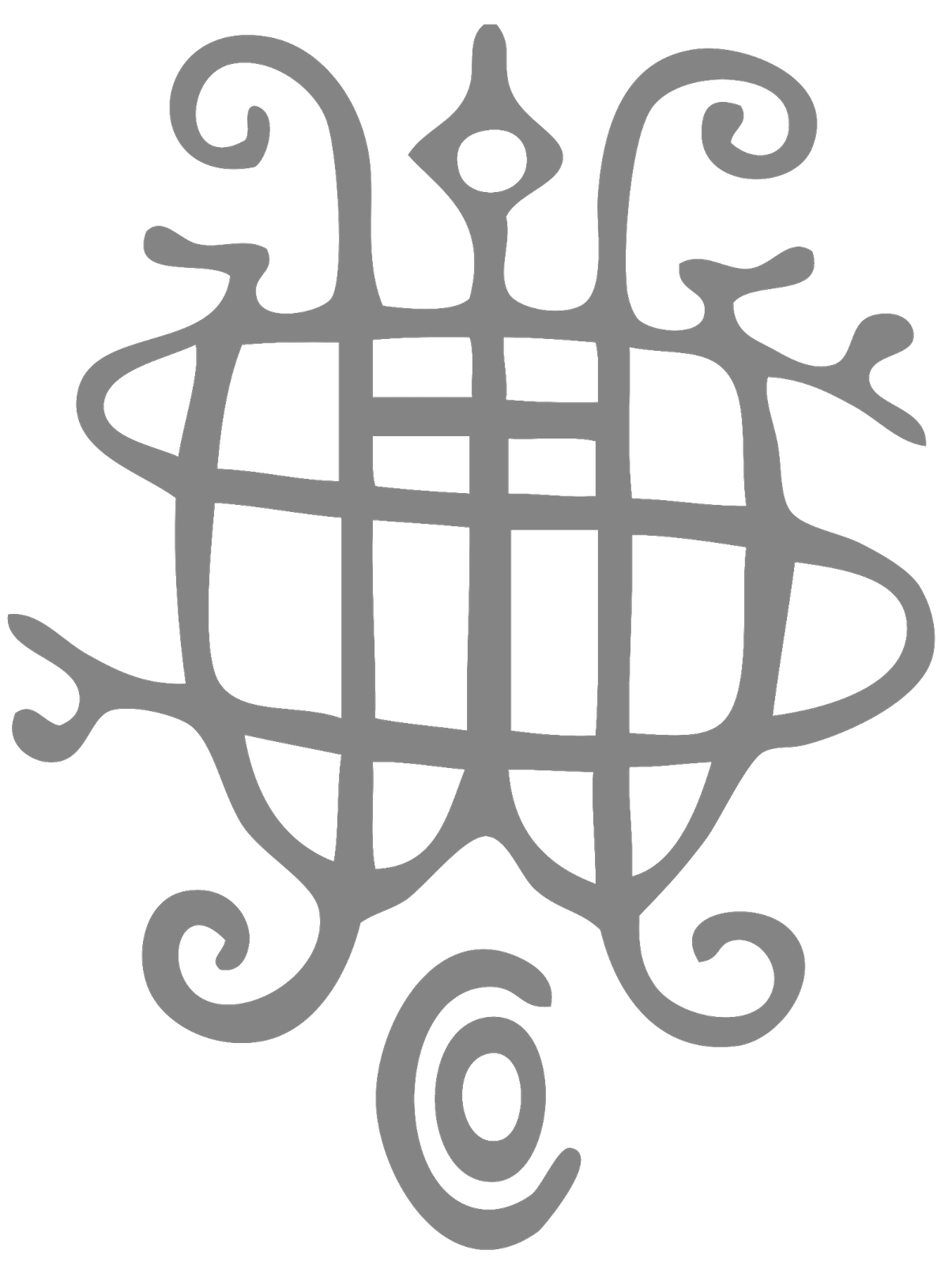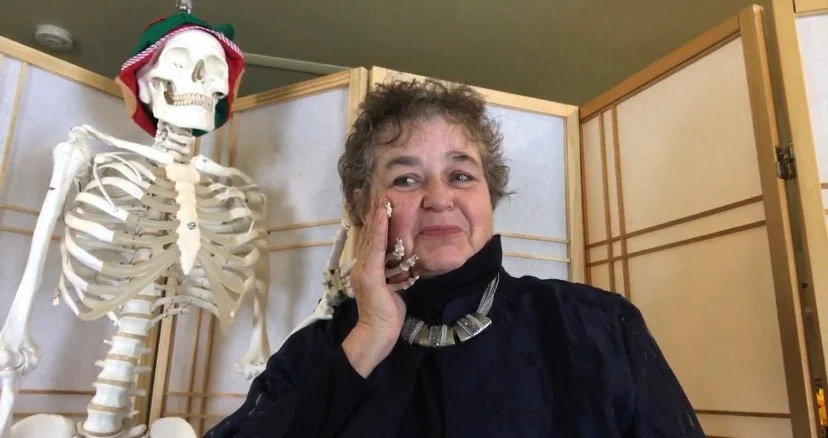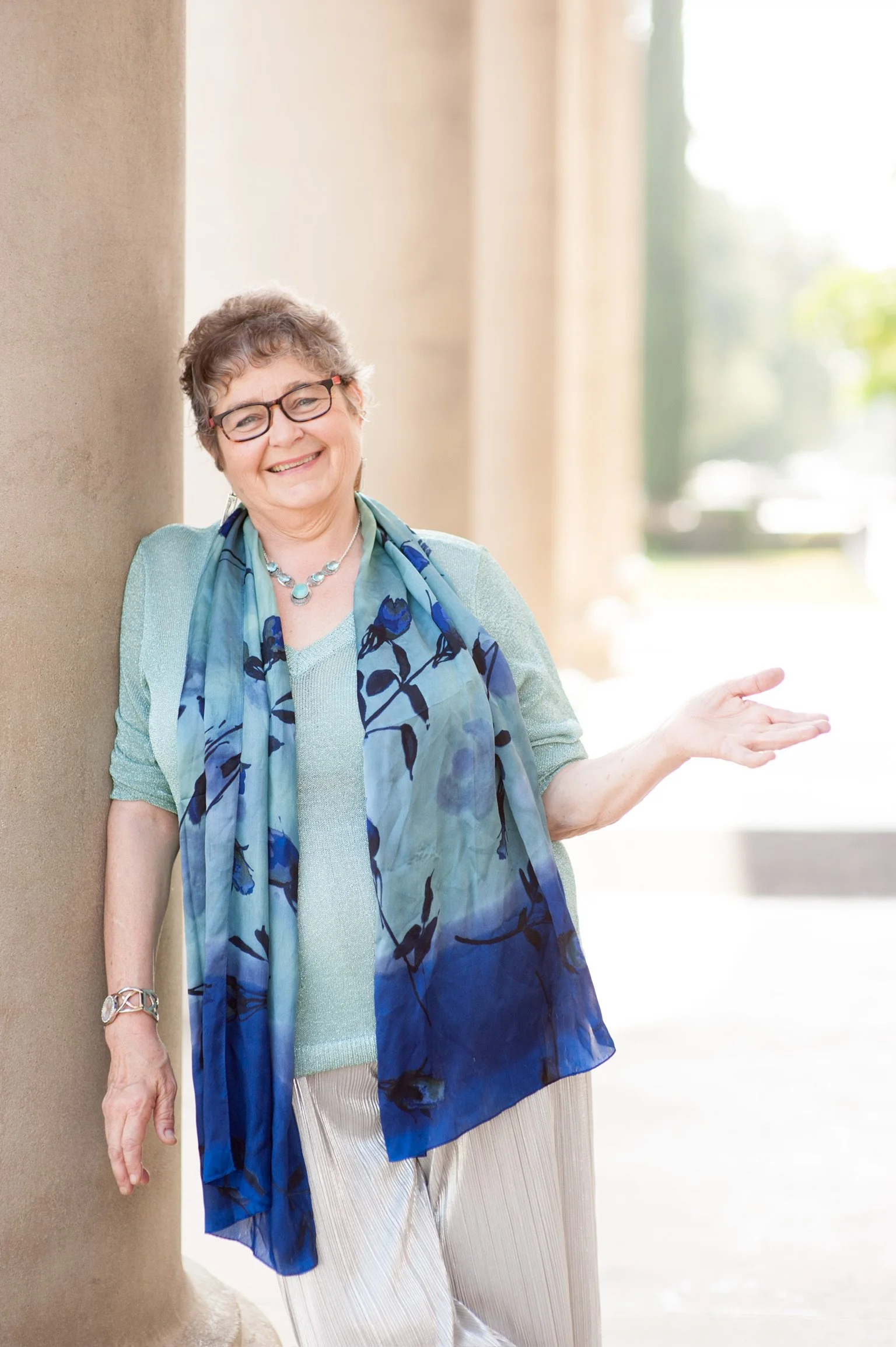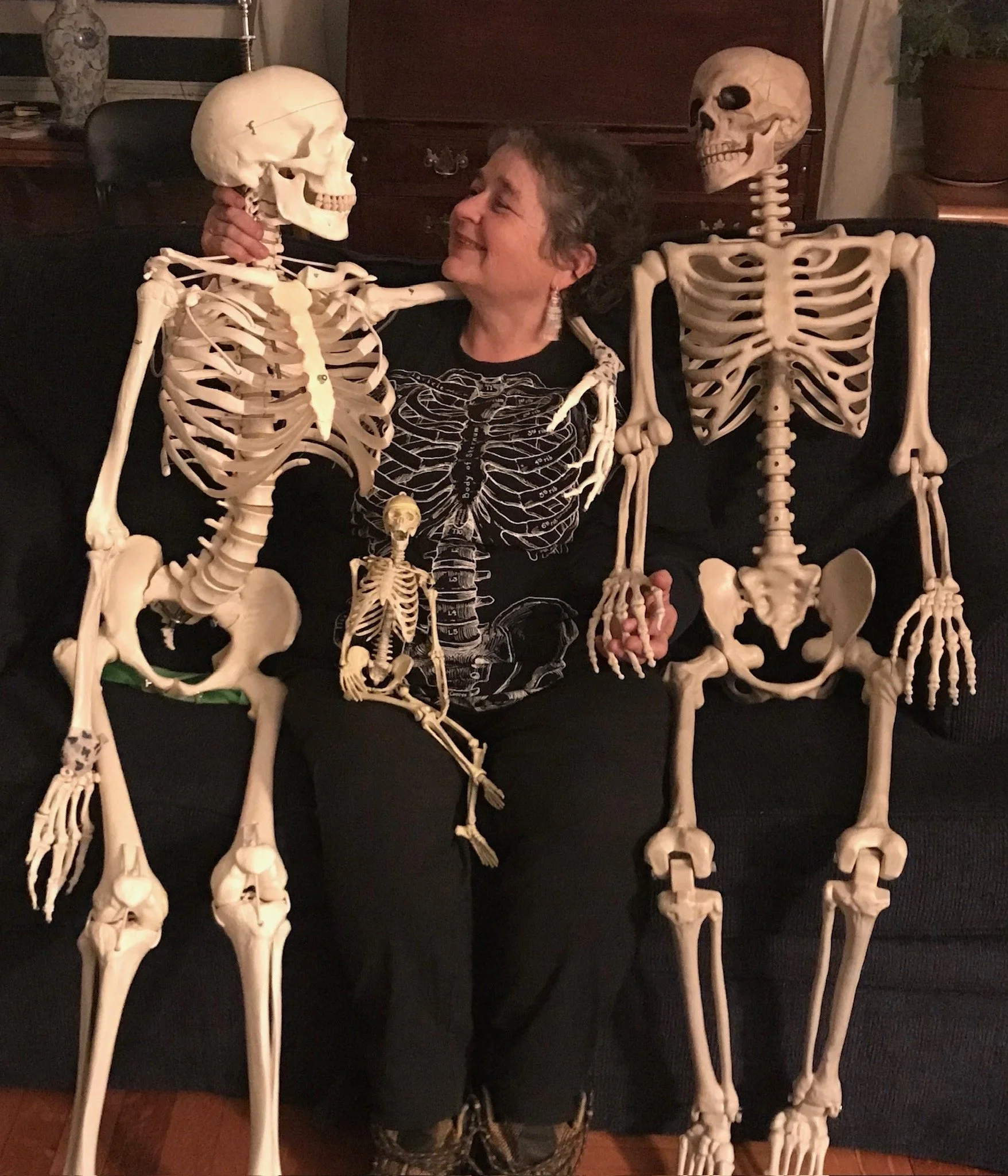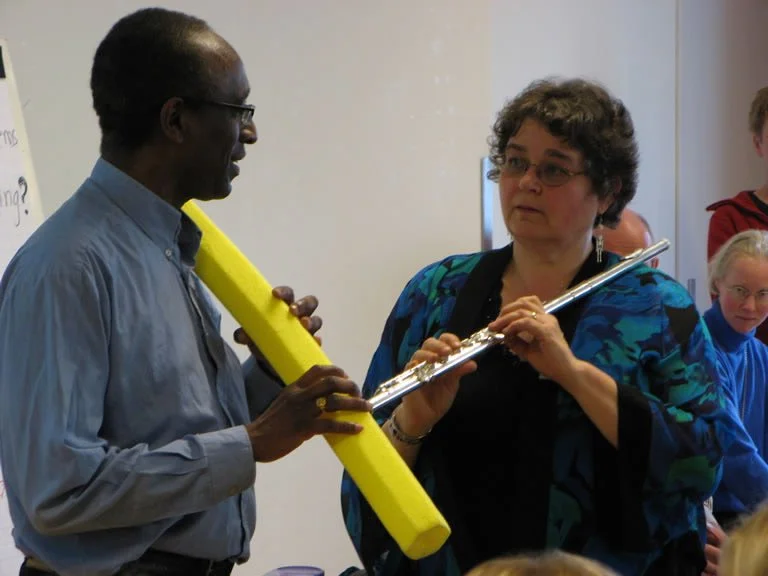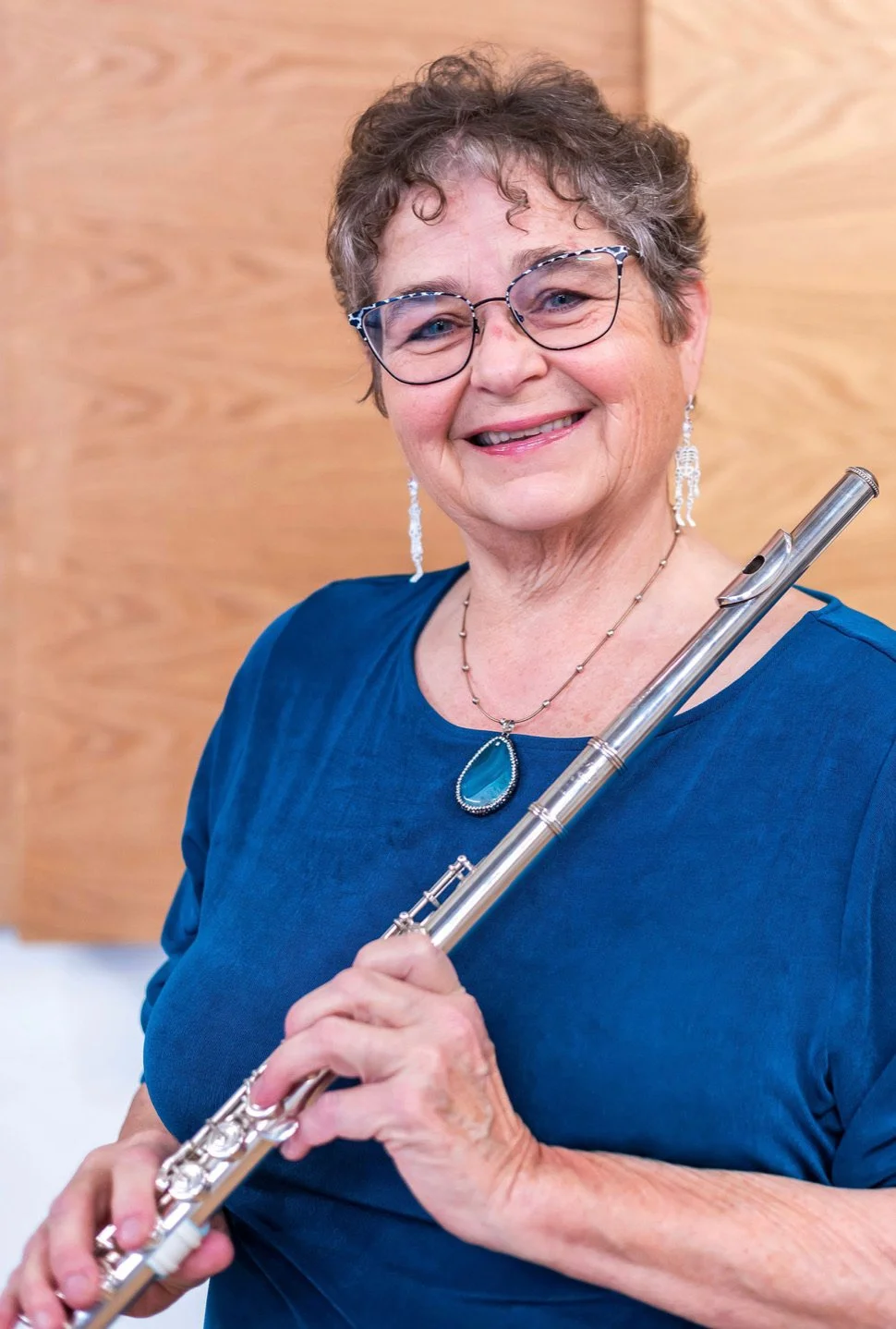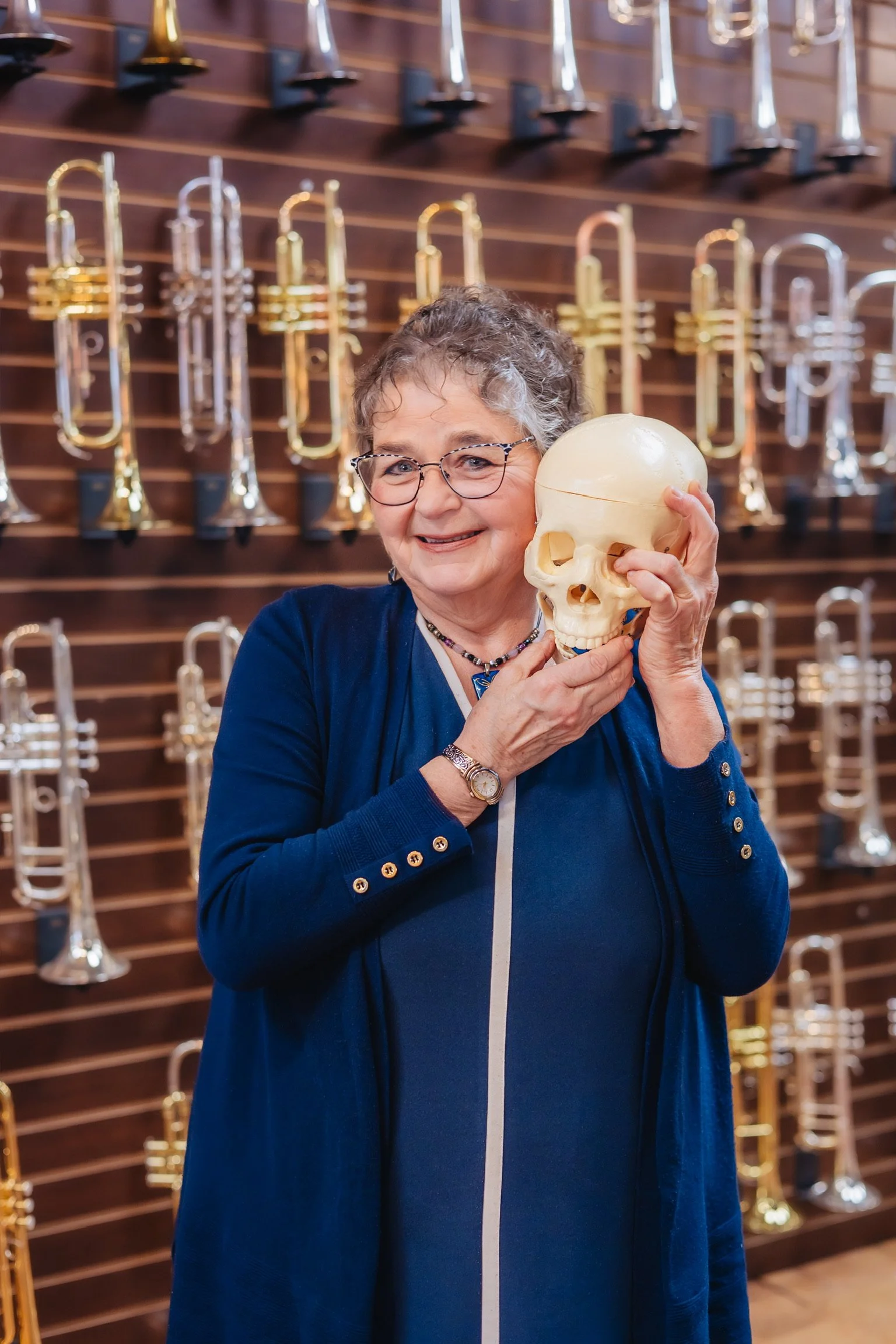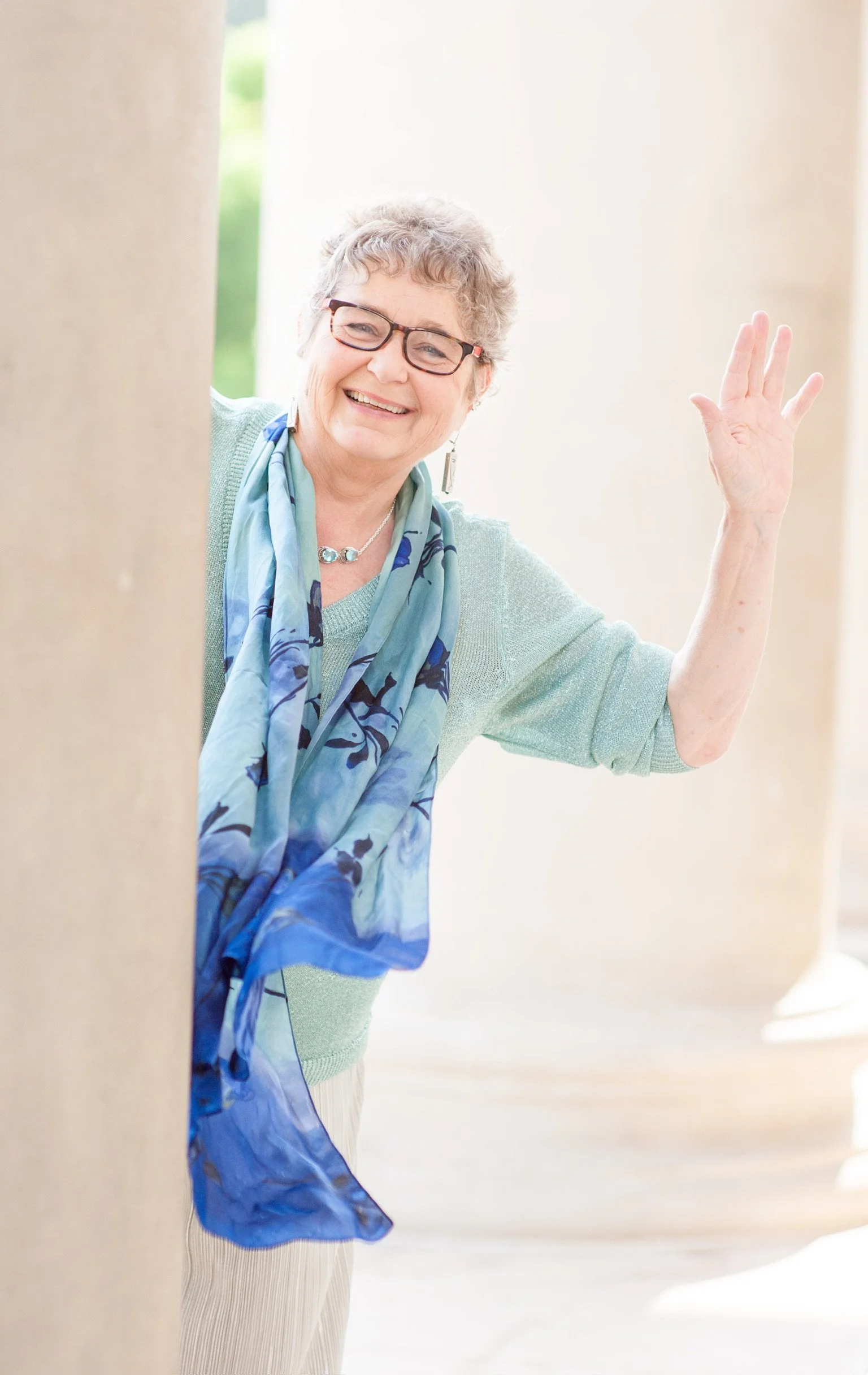Founder, Music Minus Pain
Director, The Transformational Teacher Training Program
Silver Custom, Inline, B Footjoint, C# Trill, P Cut Headjoint
Award-winning Master Teacher Dr. Lea Pearson has been training students, performers, and teachers in innovative techniques for more than 30 years.
She has helped more than 2000 musicians to prevent injury and recover joy & ease through group retreats, online programs, workshops, and private coaching presented virtually and in person. Guiding performers from Brazil to China, Dr. Pearson has shared transformative knowledge about the body at more than 175 colleges, festivals, universities, music schools, and international summer programs including London's Guildhall School of Music and Drama, the US Air Force Band, Florida State University, Antwerp Conservatory, the Dutch Flute Society, the MENC National Conference (now NAfME), Longy School of Music, Penn State University, and dozens more.
Her influence among flute teachers is legendary. She is the go-to person for questions and challenges to help students release tension and calm anxiety so they can play their best.
William Bennett, Emily Beynon, Jonathon Snowden, Goran Marcusson, Stephen Preston, Pippa Davies, Jeanne Baxtresser, Aldo Baerten, Katherine Borst Jones, Lorna McGhee, Alberto Almarza, and Liisa Ruoho all have recruited her to help their students.
Now a leader in the field of online studio instruction, Dr. Pearson creates new models to help teachers engage students in deeper learning experiences. Author of several articles on the subject, she hosts The Transformational Teacher Training Program, a unique community of teachers educating students with embodied performance and injury prevention. Dr. Pearson applies her vast experience, practical knowledge and pedagogical expertise to help teachers give their students lifelong strategies to play with joy and ease.
One of the first Licensed Body Mapping Educators in the world, Dr. Pearson authored the acclaimed book Body Mapping for Flutists: What Every Flute Teacher Needs to Know About the Body.
In 2021 she was honored by her colleagues with the Excellence and Innovation in Teaching award from the Association for Body Mapping Education.
Pearson brings unusual depth to her teaching: multiple experiences in mental health, arts education, gifted education, psychology, research, and as an artist and teacher trainer for the State of Ohio. Her studies of anatomy, neuroscience, trauma, movement, Body Mapping, the Alexander Technique and Dalcroze Eurythmics inform her integrated approach to a holistic method of teaching: centered in the use of the body and influenced by all our thoughts, emotions and experiences. A venerated voice in the flute world, she works tirelessly to lift awareness of the importance of uniting mind and body into whole artistry.
Dr. Pearson holds a Doctor of Musical Arts degree in flute performance, a Master’s Degree in performance practice from Stanford University, and a BA in music, psychology and education from Hampshire College. As a Fulbright Scholar at the Sibelius Academy in Helsinki, she studied flute and Body Mapping with Liisa Ruoho, and researched the music of Nordic women composers.
With a 40-year career as an active performer, college teacher, researcher, and a Kennedy Center Teaching Artist, Pearson also served as an adjunct flute instructor at Hillsdale College, Heidelberg College, Spring Arbor College, University of Toledo, Centre College.
Dr. Pearson applies her expertise to solving the music industry’s hidden secret: the pain and anxiety embedded in our traditional methods of instruction. Her chosen legacy is to transform the system of music education so all musicians can fully and freely express their artistic voice.
Throughout her career Pearson has pioneered and innovated multiple arts and education experiences and models.
Pedagogy and Injury Prevention
• One of the first Licensed Body Mapping Educators in the world.
• Authored the first instrument-specific book: Body Mapping for Flutists: What Every Flute Teacher Needs to Know about the Body, and dozens of other articles about teaching.
• The first to design and offer an online Body Mapping course for musicians.
• The first to design and offer a training course in the pedagogy of preventing injury, pain, and anxiety through Body Mapping, trauma-infused approaches and student-centered methods.
• Helped create the first NASM/PAMA (National Association of Schools of Music/Performing Arts Medicine Association) manual for musculoskeletal injury prevention.
• Chaired the NFA Performance Healthcare Committee for five years, sponsoring numerous convention presentations and developing new resources.
• Published several articles in The Babel Flute and the Flutist Quarterly, and created custom presentations for the Ultimate Music Business Summit, The Babel Flute Days, and the NAMM Believe in Music Convention.
• Contributed to “The NFA Flutist's Handbook: A Pedagogy Anthology, Vol. 2.”
• Was a mentor in the NFA Young Artist program and in the Performing Arts Medicine Association program.
Arts Education
• Led a $300,000 statewide four-year program in Ohio, identifying students gifted in the arts.
• Trained as a Kennedy Center Teaching Artist.
• Founding member and trainer in the Ohio Kennedy Center Collaborative.
• Mentored artists and teachers for the Ohio Arts Council and the Greater Columbus Arts Council to collaborate on nurturing the abilities of artistically gifted students in a regular classroom.
• Developed and directed an inner city after school arts program in Columbus, Ohio, using the arts for social change.
Psychology, education, and child development
• Developed the first Early Intervention Program in northeast Massachusetts and trained parents in child development.
• Presented workshops at NAfME; the Ohio, Massachusetts, New Hampshire, & Rhode Island Music Educators Associations; and at the National Association for Gifted Education.
• Led the Ohio Association for Gifted Children Parent Group, creating innovative statewide conferences to support parents.
• Entered the first class of Hampshire College, an experimental college, as a student advisor on crafting its academic structure and student support.
• Co-planned and -produced the first African American Heritage program in Danville, KY.
• Helped develop the Kentucky Association of School Councils, supporting its conventions and its monthly journal.
Performing on her Haynes flute
• Member of the South Bend Symphony, Jackson MI Symphony, Hillsdale College Community Orchestra, Westerville Symphony, and substitute with the Toledo Orchestra.
• Music of Nordic Women composers presented in Estonia and Finland as well as at three conferences on women in music.
• Flute Music of Black Women Composers presented at Indiana State University; Fresno Pacific University; Miami University; Ohio State University; Louisiana State University, Hampton University; Helsinki, Finland; and Tallinn, Estonia.
• Founding and 10-year member of Dr. Tony’s Original Ragtime Band.
• Founded and coordinated UUNIVERSE! - a chamber music series featuring music of diverse cultural groups. Programmed music of women, Black, and other under-represented composers. Researched all composers and pieces, creating extensive program/speaking notes to connect to the audience to these composers.
Professional Development
• Essentials of Performing Arts Medicine Certificate Course.
• Imagery for a Healthy Pelvis and Spine with Eric Franklin.
• Open Focus Trainer Certification, Princeton Biofeedback Centre.
“I believe that everybody can succeed if they have a teacher who supports their individual style, is curious about their experiences, and helps them break through barriers to learning.
When you create an environment of success, acceptance, and appropriate challenge, students will feel heard, valued, and inspired.”
Artist statement:
Growing up in a family of musicians, I learned the subtletlies of artistic expression as one of my first languages. I had the rare privilege of being supported in my musical endeavors; my family valued music and education above all.
I come from a long line of educators, musicians and physicians.
• My grandmother founded a teacher-training school at Tufts University, based on the ideas of Maria Montessori, and was instrumental in bringing her to the United States
• Five great-aunts and-uncles started schools.
• My mother taught in an experimental school in Cambridge, and participated in the first Tanglewood summer program in 1940.
• My aunt founded the U.S. training of music teachers in Orff-Schulwerk education.
• My dad, a doctor, met my mom playing string quartets.
• I and my three sisters all became professional musicians.
My traditional training and what I didn’t know:
I sought a life as a professional musician. I went the traditional route of studying with excellent teachers in the Boston area, majoring in music and seeking out a career as an orchestra performer, soloist, and college teacher. As a performer, my interest in chamber music spurred me to explore the music of under-represented composers: women, composers of color and other marginalized peoples. I wanted not only to be a role model for my biracial children, but to help all young musicians see themselves in our repertoire.
But my playing was always limited by tension. At age 18 my left hand went numb, beginning my 30-year journey of playing in pain. It was decades before I realized that the issue originated years earlier, when I was a beginning flute student.
It was the teaching that I had – or DIDN’T have – that was the problem. What ultimately kept me from improving was physical tension. Quite simply, nobody told me what I needed to know about my body in order to advance my technique, breathing, and expression. I was taught things that not only didn’t help, but that actually created more physical tension.
Recently I got curious: in an ideal world, what should have happened, from my very first lesson, to prevent my 30-year journey of pain?
Many things. Most importantly, every teacher should have been curious about what I experienced when I played.
Every teacher should have been asking me questions:
about how I used my body to play loud or soft, fast or slow; whether I was comfortable; or how I felt about a certain piece. I could have discovered playing that promoted ease and reduced tension, instead of the anguish of weeping, unable to open my flute case because it hurt so much to play.
I don’t want anybody to have to suffer as I did. In 2000 I wrote my book, “Body Mapping for Flutists: What Every Flute Teacher Needs to Know About the Body,” for my DMA thesis, hoping to make a difference in the high rate of musicians injuries. Yet 23 years later, thousand of musicians are still suffering.
That’s why I’m so passionate about changing the way we teach in the studio.
Every day people come to me with pains that could have been prevented.
It breaks my heart! It could be a small pain, such as a sore wrist. Or large, such as tendinitis that derails a career. Each struggling musician fires me up to empower teachers to change this terrible epidemic.
I’ve spent a lifetime training artists, teachers, and musicians in innovative methods. What always guides me are the principles I’d love to see other teachers cultivate: integrity, inclusion, respect, openness, authenticity, humor, kindness, listening, and artistry.
At Stanford, I studied with Frances Blaisdell, one of our most respected pedagogues. At Ohio State I followed a 12-year dream to study as a Fulbright Scholar in Helsinki, learning from the masterful Liisa Ruoho. Other treasured mentors have been Katherine Borst Jones, who showed me the ins and outs of running a university flute studio and the importance of contributing to a national organization (NFA). Barbara Conable, the originator of Body Mapping, and my Alexander Technique teacher for three years, saved my career and in many ways, my life. I spent three years of weekly lessons understanding how my body worked, and how to rewire my brain with habits to support freedom and ease in artistry. Her phenomenal training facilitated my return to ease and joy in my own playing, and inspired me to become a Licensed Body Mapping Educator.
As Director of the Ohio Alliance for Arts Education, and later the Ohio Arts Council, Donna Collins gently schooled me through the change from a naive self-centered artist to one who believed in the power of transformation through arts education, professionalism in business, and how a small group of committed citizens can change the world.
My business mentors, Mark and Shannon Grainger of Big Impact University, saw in me the potential for leadership and transformative change long before I could. Five years of studying speaking and marketing with them gave me the expertise to develop and present the important work of change. Through their skilled coaching I learned how to hold space for and support musicians through the challenges and pain of injury and anxiety.
I have been blessed with meaningful experiences and talented teachers for the last 55 years. I have received love, kindness, support, and knowledge inspiring me to create a revolution in teaching.
We need to transform pain into potential, anguish into awareness, and tension into ease, so all musicians can fully and freely express their artistic voice and passion!
It’s in my bones!
